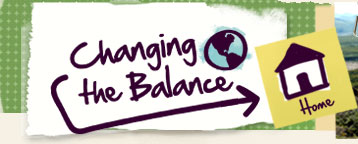
| Description |
| A presentation that allows students to explore
details of the carbon cycle, looking at various parts of this
biogeochemical sequence by examining carbon reservoirs and
how carbon is exchanged among them and the atmosphere. VIEW THE PRESENTATION |
| Background |
Carbon is present in every living thing on Earth ... in one form or the other. It's also present in rocks, in our air, and in our oceans. The amount of carbon in our universe is constant... the same today as it was 10,000 years ago. Carbon naturally moves throughout our environment in a biogeochemical cycle called the carbon cycle. Much like the water cycle, this process is a continual movement of carbon from sources where carbon is released -- to sinks where carbon is taken up. Sources can be just about anything, including living things, our oceans, our lands, and our atmosphere. Sinks include plants, our land and our oceans. The process includes: The problem is that human activities are changing this natural cycle, increasing the amount of carbon in the atmosphere. In the slide show it is noted that there is more carbon dioxide in the atmosphere now than at any point in the last 420,000 years. Although four hundred and twenty thousand years is simply the limit of reliable estimates, there is evidence that even 600,000 years ago levels weren’t as high as they are today. Development of previously unused land accounts for some of the increase. But, burning of fossil fuels for transportation, heat, electricity and other energy needs has had the most significant impact on the natural carbon cycle. And the effects of this usage are huge: humans have burned so much fossil fuel that there is about 30% more carbon dioxide in our atmosphere today than there was 150 years ago. |
| For more information |
| Learning Objective |
After working with this presentation, students will be able to describe the carbon cycle, identify carbon reservoirs, and describe carbon exchange between carbon reservoirs and the atmosphere. |
| Standards Addressed |
|
| Can be used with existing lesson plans on |
| Carbon dioxide; carbon cycle, carbon sinks; greenhouse gases; greenhouse effect; biogeochemical sequences |
| Additional ways to use this asset to enrich your curriculum |
|
| Printable Resources |
| The Carbon Cycle (PDF | Word) |





